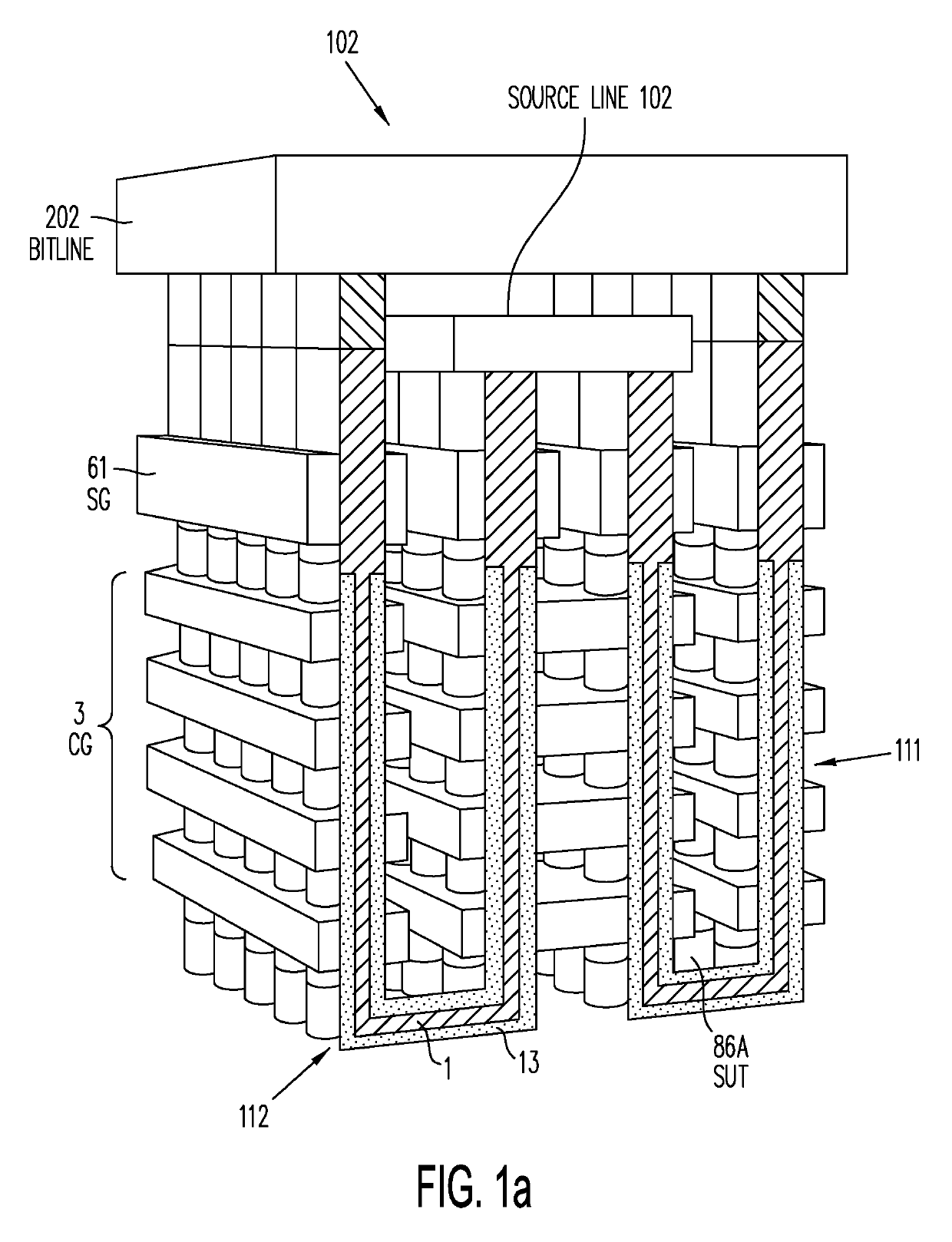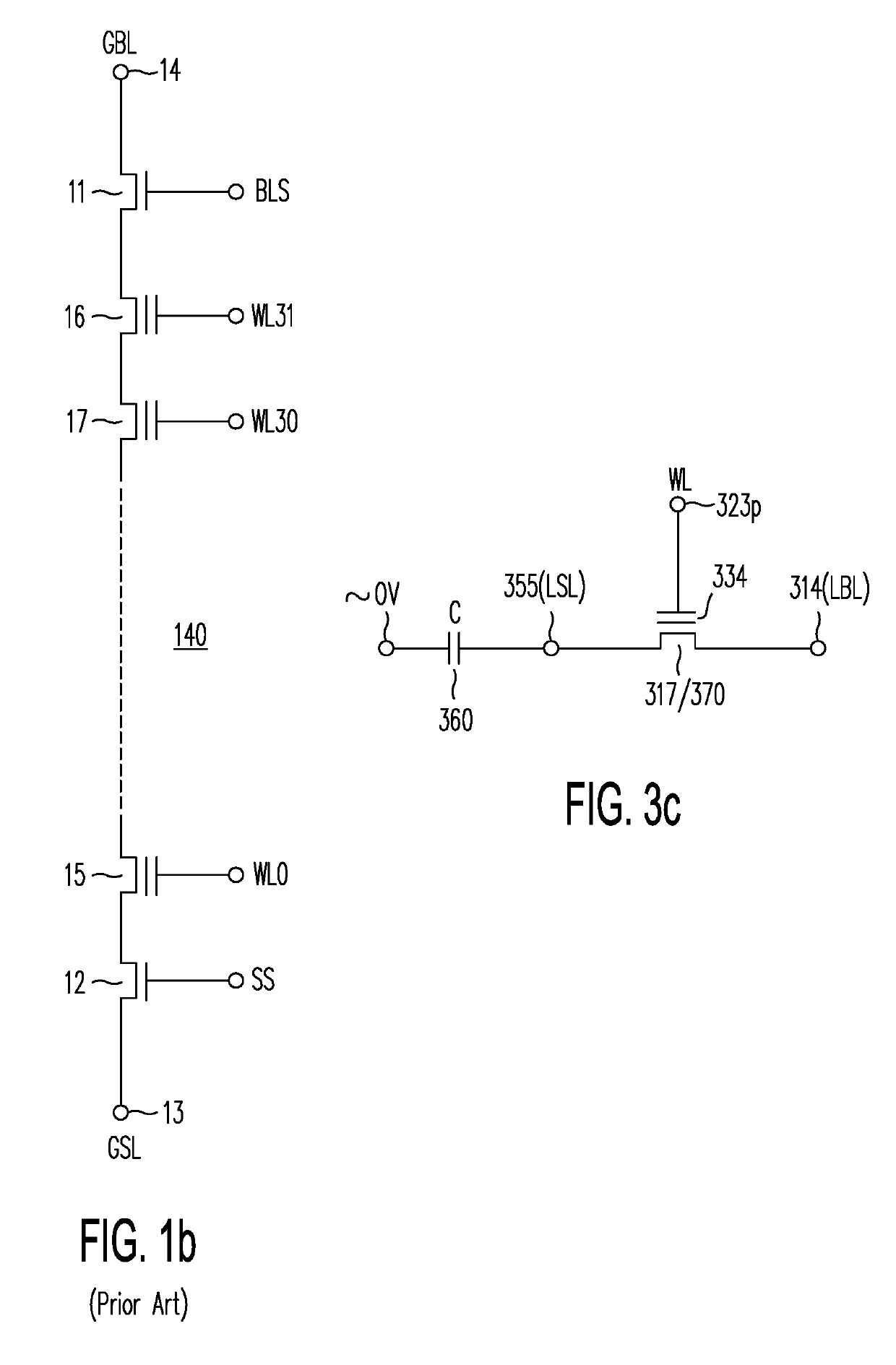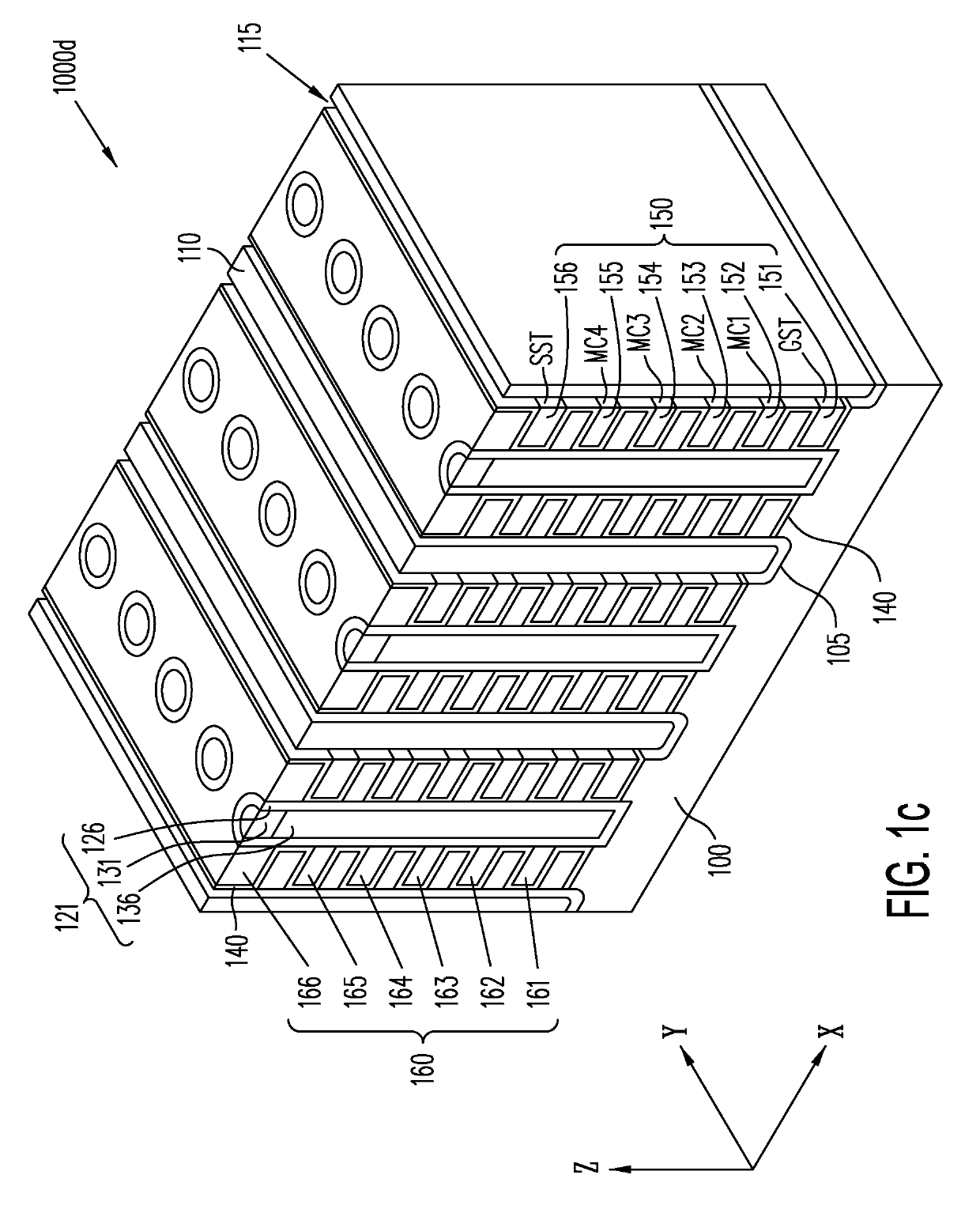Three-dimensional vertical NOR flash thin-film transistor strings
a transistor string and three-dimensional vertical technology, applied in the field of high-density memory structures, can solve the problems of limiting affecting the performance of the transistor, and reducing the number of transistors that can be programmed in parallel, so as to reduce the probability of reading or writing disturbance, reduce the effect of resistance and faster sensing
- Summary
- Abstract
- Description
- Claims
- Application Information
AI Technical Summary
Benefits of technology
Problems solved by technology
Method used
Image
Examples
Embodiment Construction
[0059]FIG. 2 shows conceptualized memory structure 100, which illustrates a 3-dimensional organization of memory cells (or storage elements) provided in vertical NOR strings. In conceptualized memory structure 100, each vertical NOR string includes memory cells that are each controlled by a corresponding horizontal word line, according to one embodiment of the present invention. In conceptualized memory structure 100, each memory cell is formed in deposited thin films provided “vertically”, i.e., along a direction perpendicular to the surface of substrate layer 101. Substrate layer 101 may be, for example, a conventional silicon wafer used for fabricating integrated circuits, familiar to those of ordinary skill in the art. In this detailed description, a Cartesian coordinate system (such as indicated in FIG. 2) is adopted solely for the purpose of facilitating discussion. Under this coordinate system, the surface of substrate layer 101 is considered a plane which is parallel to the ...
PUM
 Login to View More
Login to View More Abstract
Description
Claims
Application Information
 Login to View More
Login to View More - R&D
- Intellectual Property
- Life Sciences
- Materials
- Tech Scout
- Unparalleled Data Quality
- Higher Quality Content
- 60% Fewer Hallucinations
Browse by: Latest US Patents, China's latest patents, Technical Efficacy Thesaurus, Application Domain, Technology Topic, Popular Technical Reports.
© 2025 PatSnap. All rights reserved.Legal|Privacy policy|Modern Slavery Act Transparency Statement|Sitemap|About US| Contact US: help@patsnap.com



